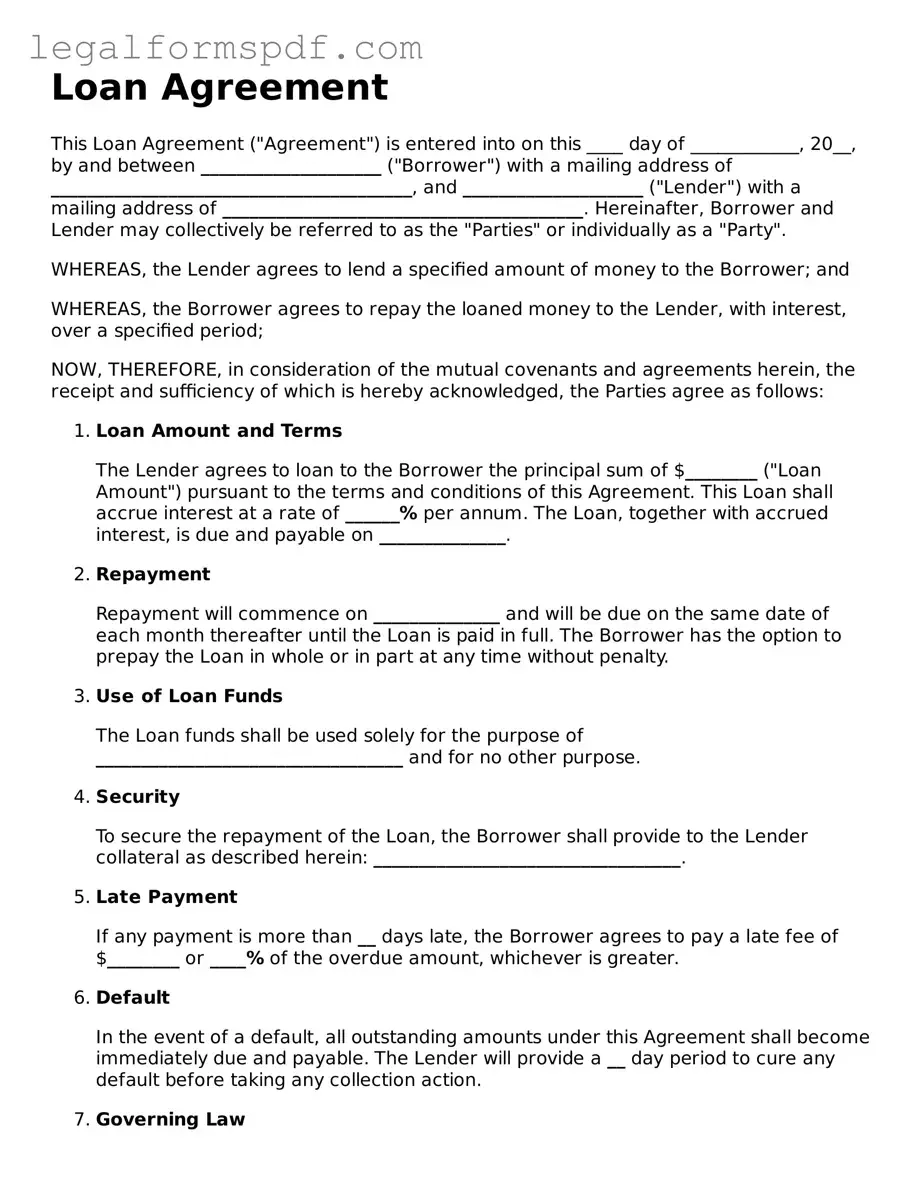A Promissory Note is a document similar to a Loan Agreement form, as it also outlines the terms under which money has been lent and the repayment obligations. However, a Promissory Note is generally more straightforward and less detailed than a Loan Agreement. It serves as a written promise from the borrower to pay back the lender a specific amount of money within a set period or on demand. While a Loan Agreement form typically includes detailed terms and conditions, such as the interest rate and repayment schedule, a Promissory Note might not be as comprehensive.
A Mortgage Agreement is another document closely related to a Loan Agreement, with its specific focus on real estate transactions. In essence, it outlines the borrower's promise to repay the loan used to purchase property and grants the lender a security interest in the property until the loan is fully repaid. Like a Loan Agreement form, it details the loan's terms, including the repayment schedule, interest rate, and actions in case of default. The primary difference is the Mortgage Agreement's collateral—the purchased property—which secures the loan.
Similarly, a Deed of Trust is often used in real estate transactions and shares similarities with a Loan Agreement form. This document involves three parties: the borrower, the lender, and a trustee, and it places the property title in trust with the trustee as security for the loan. Like a Loan Agreement, it specifies the terms under which the loan is provided and must be repaid. The primary difference lies in its use of a trustee, who holds the property's title until the loan is repaid in full.
An IOU (I Owe You) document represents a simple acknowledgment of debt, similar to a Loan Agreement form in its recognition of a financial obligation. However, it is far less formal and detailed, usually lacking comprehensive terms like repayment schedules, interest rates, and collateral agreements. An IOU simply records the borrower's obligation to repay a certain amount to the lender, making it similar in purpose but significantly less binding and detailed than a Loan Agreement.
A Line of Credit Agreement shares similarities with a Loan Agreement form by stipulating the terms under which a lender provides a specified amount of money that the borrower can draw upon as needed. Like a Loan Agreement, it includes details about the maximum amount available, the time frame for borrowing, repayment terms, and interest rates. The key difference is the flexibility a Line of Credit Agreement offers, allowing the borrower to take out varying amounts up to the maximum limit over a period, rather than a lump sum upfront.
A Credit Agreement, often used for establishing ongoing credit arrangements, similarly outlines the terms between a borrower and lender, detailing the loan amount, repayment structure, and interest rates, akin to a Loan Agreement form. It is typically more complex, covering various forms of credit facilities, repayment conditions, and covenants that the borrower must adhere to. Credit Agreements are often used in more significant financing transactions and offer a broader scope than the typically more straightforward Loan Agreement form.
Finally, a Business Loan Agreement is tailored specifically to the needs of businesses and shares the foundational attributes of a standard Loan Agreement form, detailing the loan terms, repayment schedule, interest rate, and collateral, if any. What sets a Business Loan Agreement apart is its focus on the needs of businesses, potentially including provisions related to the business's financial health, covenants, and specific conditions under which the loan must be used. This focus on business operations and objectives makes it distinct yet fundamentally similar to a Loan Agreement form.
